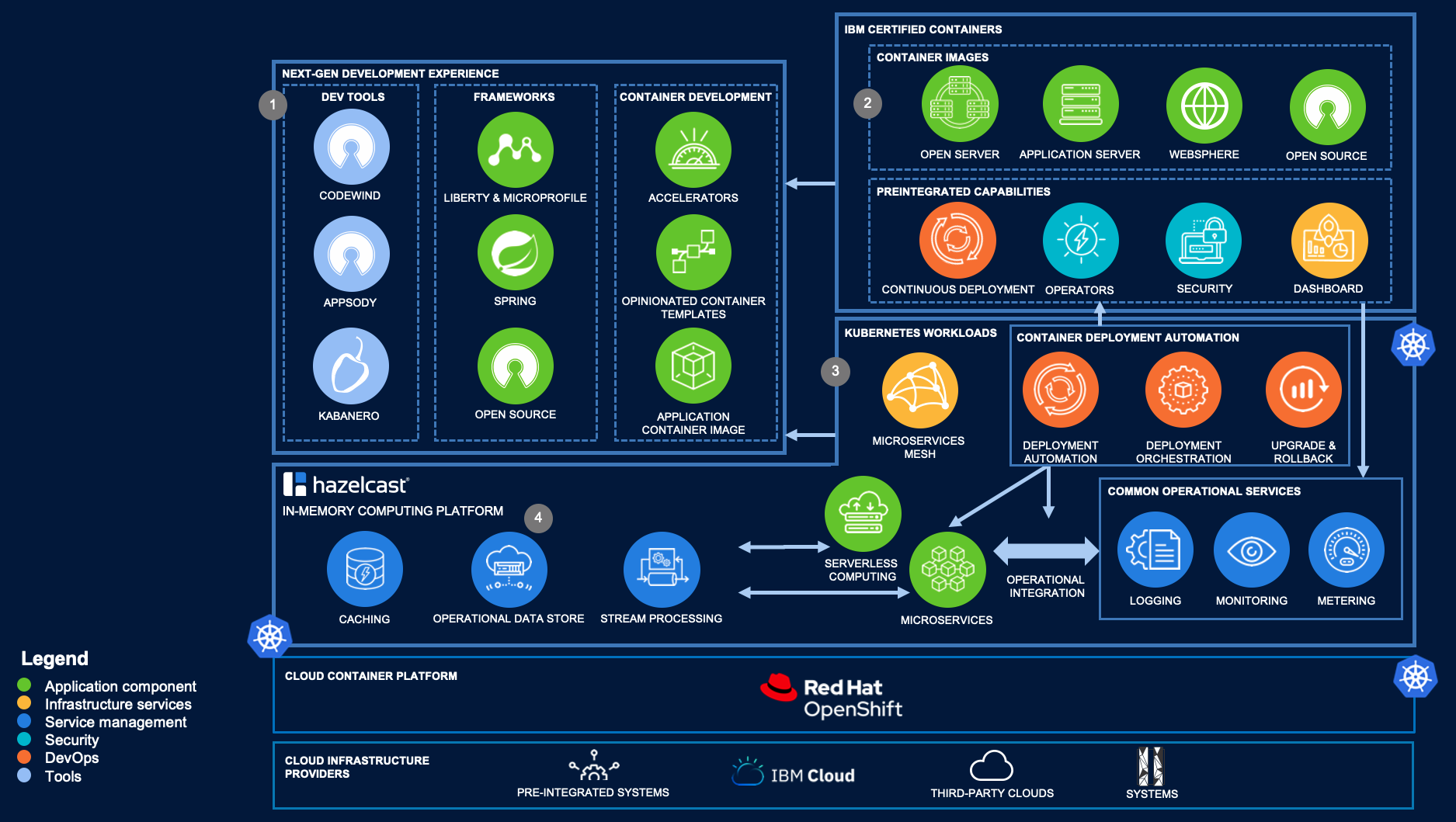IBM
About Intel and IBM
- Create new cloud-native applications
- Modernize and optimize existing applications
- Open up enterprise data centers to work with cloud services
Hazelcast and IBM Cloud Paks
- Migrating eXtreme Scale Capabilities to the Cloud (white paper)
- Hazelcast In-Memory Computing Platform (IMCP) and Red Hat Data Grid (RHDG) Comparison (white paper)
IBM Cloud Paks offer enterprises a containerized solution that is an open, faster and more secure way to move core business applications to any cloud. With many of the world’s largest organizations deploying Hazelcast, it is a proven solution that will support the high-performance requirements of mission-critical applications in any cloud.

Deploy Edge-to-Cloud IoT Architectures with IBM and Hazelcast
For a growing number of Internet of Things (IoT) use cases, edge computing must be integrated with a cloud-based data center to address the challenges of capturing huge amounts of data from remote locations. However, deploying an edge computing solution has its own set of challenges, including limited computing space, security, and software change management.
Hazelcast and IBM work together to drive edge-to-cloud solutions that are fast, efficient, lightweight, and secure. Connected cars, predictive maintenance on industrial equipment, and smart cities are just some examples where edge-to-cloud plays a key role.
Flexible and Adaptable
- One platform that supports varied workloads
- Easy 1-button push experiences around the management of containerized software for any cloud
- The ability to leverage any development platform while creating a unified management plane
Mainframe Optimization

Cloud-Native Architecture
Existing in-memory computing platforms might run well in traditional stacks, but products like IBM eXtreme Scale cannot run in modern, Kubernetes-based, cloud environments. You need a cloud-native in-memory platform like Hazelcast to leverage the cloud. This diagram based on IBM architectures shows where Hazelcast fits into a comprehensive IBM stack which:
- Supports the development of next-generation cloud applications
- Leverages containers for easier deployment
- Connects cooperating services
- Accelerates applications via in-memory computing and stream processing
To learn how Hazelcast can support your cloud initiatives while also adding more in-memory capabilities to your architecture, read the following:

Application Modernization
- Analyze the impact of migrating to containers
- Use container templates to create application container images
- Automate the continuous build pipeline
- Automate the deployment via Helm Charts and Operators
- Collect logs and metrics
- Share key metrics via dashboards